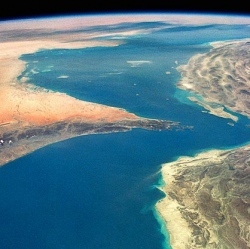
A spark from a lightning bolt, interstellar dust, or a subsea volcano could have triggered the very first life on Earth. What happened next? Life can exist without oxygen, but without nitrogen to build genes, essential to all organisms, life on the early Earth would have been scarce.
The ability to use atmospheric nitrogen to support more widespread life was thought to have appeared roughly 2 billion years ago. Now research from the University of Washington looking at some of the planet’s oldest rocks finds evidence that 3.2 billion years ago, life was already pulling nitrogen out of the air and converting it into a form that could support larger communities.
"People always had the idea that the really ancient biosphere was just tenuously clinging on to this inhospitable planet, and it wasn’t until the emergence of nitrogen fixation that suddenly the biosphere become large and robust and diverse," said co-author Roger Buick, a UW professor of Earth and space sciences. "Our work shows that there was no nitrogen crisis on the early Earth, and therefore it could have supported a fairly large and diverse biosphere."
The authors analyzed 52 samples ranging in age from 2.75 to 3.2 billion years old, collected in South Africa and northwestern Australia. These are some of the oldest and best-preserved rocks on the planet. The rocks were formed from sediment deposited on continental margins, so are free of chemical irregularities that would occur near a subsea volcano. They also formed before the atmosphere gained oxygen, roughly 2.3 to 2.4 billion years ago, and so preserve chemical clues that have disappeared in modern rocks.
Even the oldest samples, 3.2 billion years old, three-quarters of the way back to the birth of the planet – showed chemical evidence that life was pulling nitrogen out of the air. The ratio of heavier to lighter nitrogen atoms fits the pattern of nitrogen-fixing enzymes contained in single-celled organisms, and does not match any chemical reactions that occur in the absence of life.
